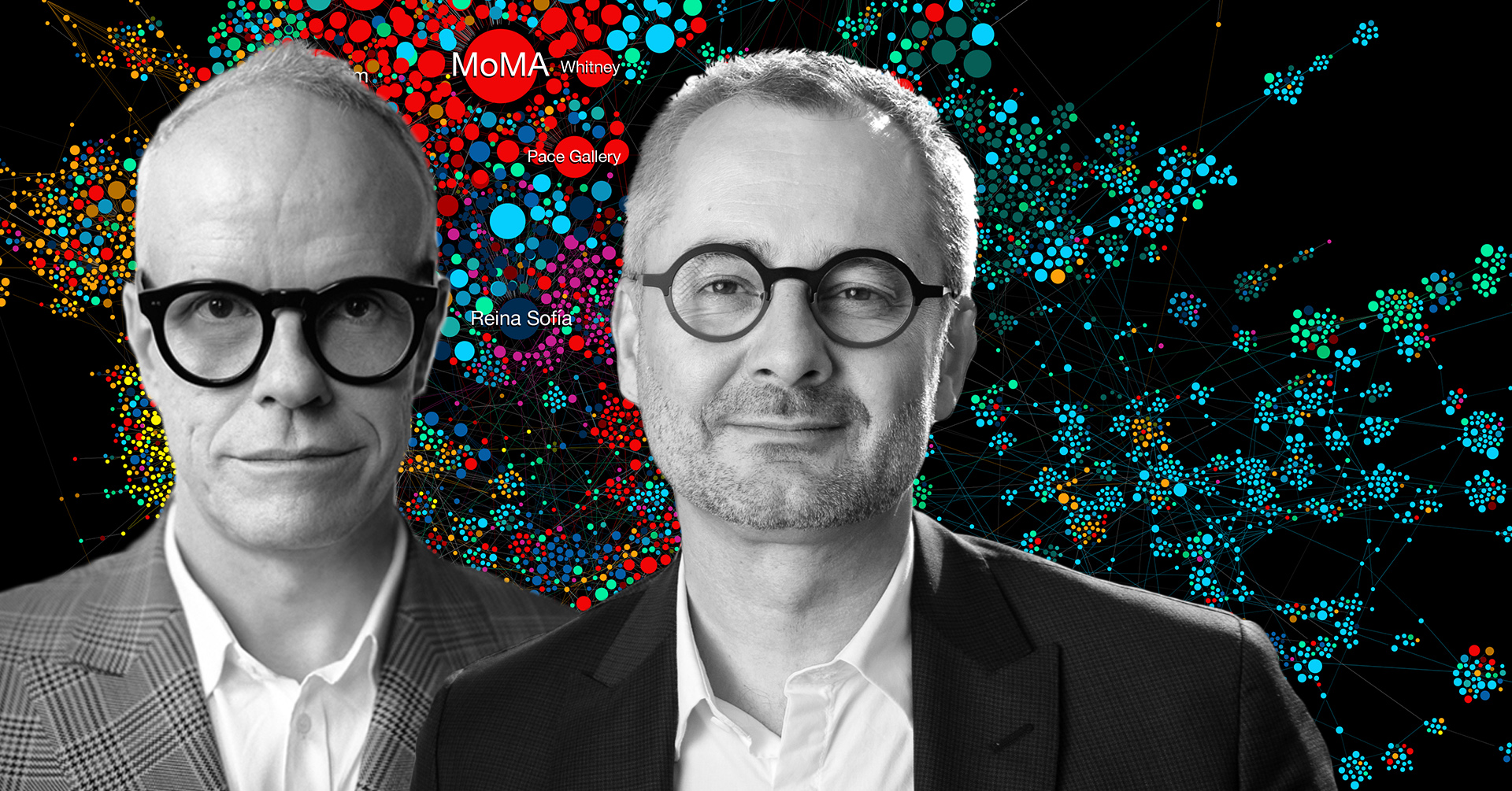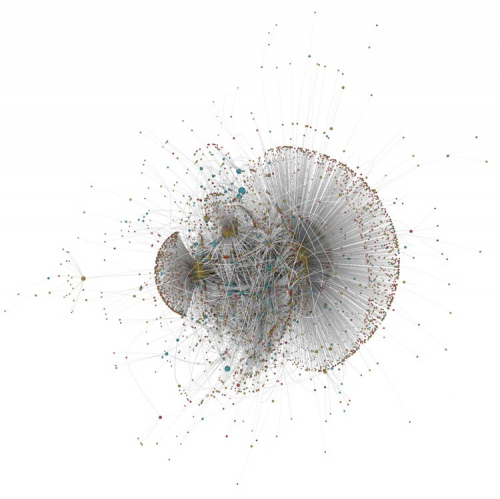Join Serpentine Creative Director Hans Ulrich Obrist, physicist and Director of BarabásiLab Albert-Lászlo Barabási, ideas collective and studio CAMP, and artist Burak Arikan, Ashok Sukumarannal és Shaina Ananddal as they discuss how network effects and big data are poised to shift our understanding of the dynamics of the contemporary art world.
Network effects pervade the art world, determining the success of individual artists, their access to exhibition opportunities. Big data and network science allow us to increasingly map out and quantify these effects, bringing out hidden connections that shape artistic careers. Meanwhile, network visualisations are themselves emerging as a new form of artistic practice.
The goal of the event is to start an important conversation about the role of networks in art. This talk follows the launch of Hidden Patterns currently on show at the Ludwig Museum-Museum of Contemporary Art, in Budapest, Hungary, until June 20 this year and will also open at ZKM Karlsruhe, Germany, on 1 May, 2021, until January 2022. The exhibition presents 25 years of research by Albert-László Barabási that uses state of the art network diagrams, visualisations and data sculptures to capture underlying structures and relationships that can help us better understand both art and society.
The discussion is available here:
The event is organized by Serpentine Galleries and Ludwig Museum - Museum of Contemprary Art, Budapest Virtual Event Production by Alexandra Russell, additional production support by Alex Boyes. Special thanks to the British Council and Andrea Simon from the Ludwig Museum Hungary. Sponsors and partners of the exhibition:
CAMP is a collaborative studio founded in Bombay in 2007. It has been producing fundamental new work in film and video, electronic media, and public art forms, in a practice characterised by a hand-dirtying, non-alienated relation to technology.
Burak Arikan is a New York and Istanbul based artist who works with complex networks. His software, prints, installations, and performances have been featured in numerous exhibitions internationally.
Albert-László Barabási is a cross-disciplinary researcher and founder of BarabásiLab who originally studied sculpture, before changing to the study of physics at the universities of Bucharest and Budapest. He gained his PhD from Boston University and is responsible for developing the theory of complex networks.
Visit the Ludwig Museum’s Hidden Patterns exhibition page here
This exhibition will be touring to the ZKM Centre for Art and Media Karlsruhe from 01 May 2021 – 09 January 2022, to find out more visit their exhibition page here


Related content

BarabásiLab: Hidden Patterns. The Language of Network Thinking 10. October, 2020 – 26. June, 2021
The exhibition Hidden Patterns aims to present the last 20 years of research based on the so-called Barabási networks mainly related to the activity of physicist and network researcher Albert-László Barabási.
